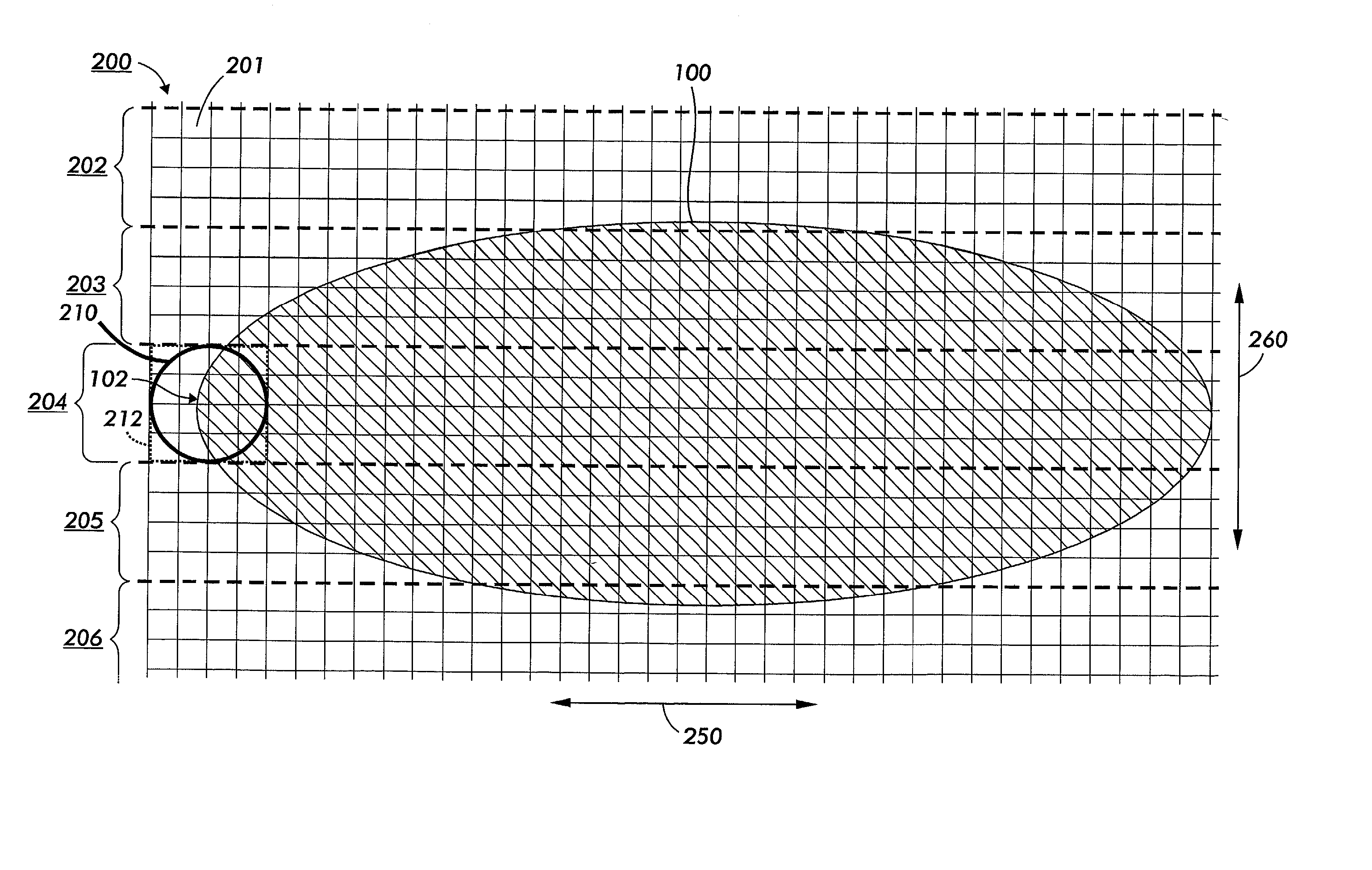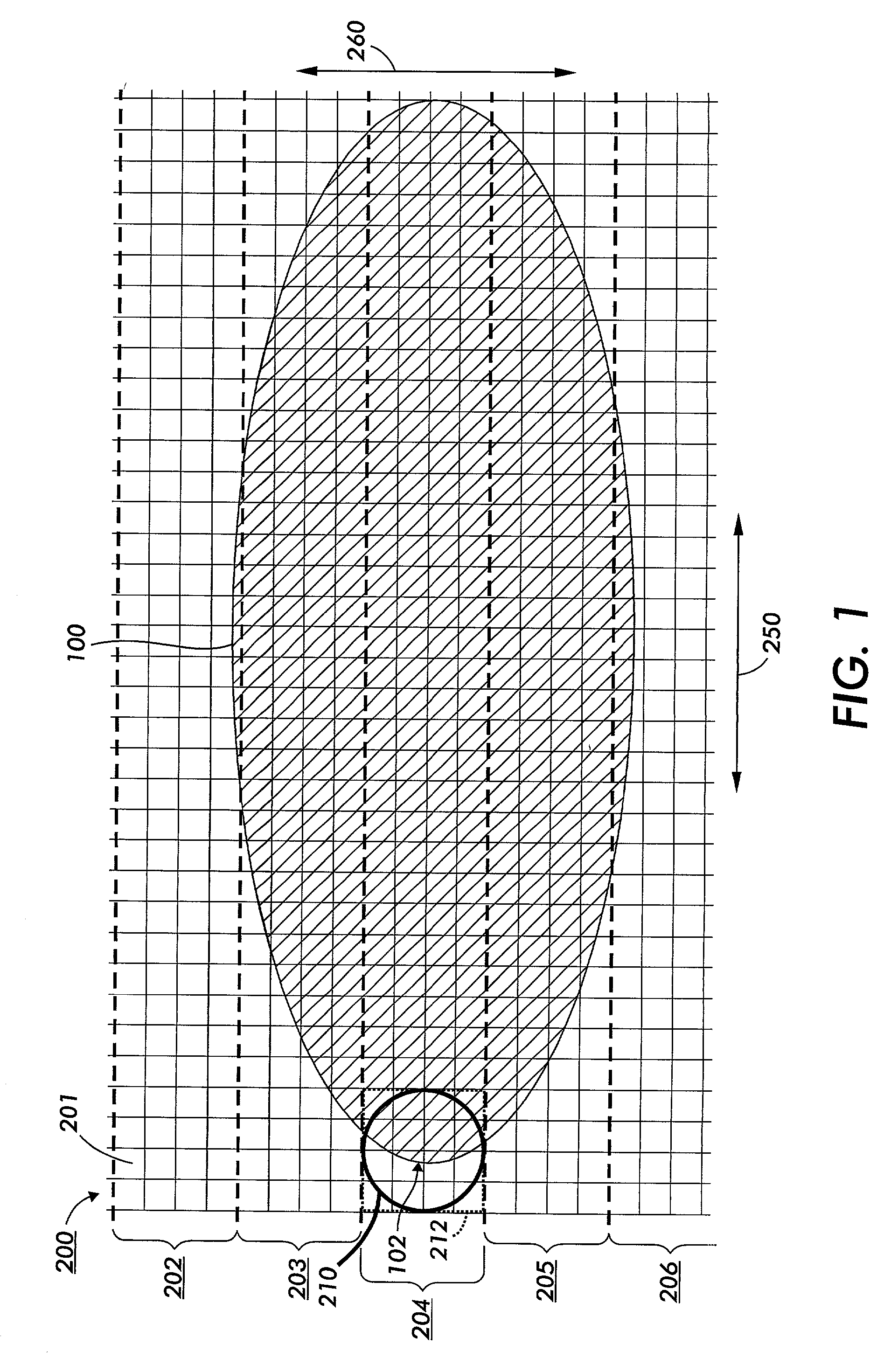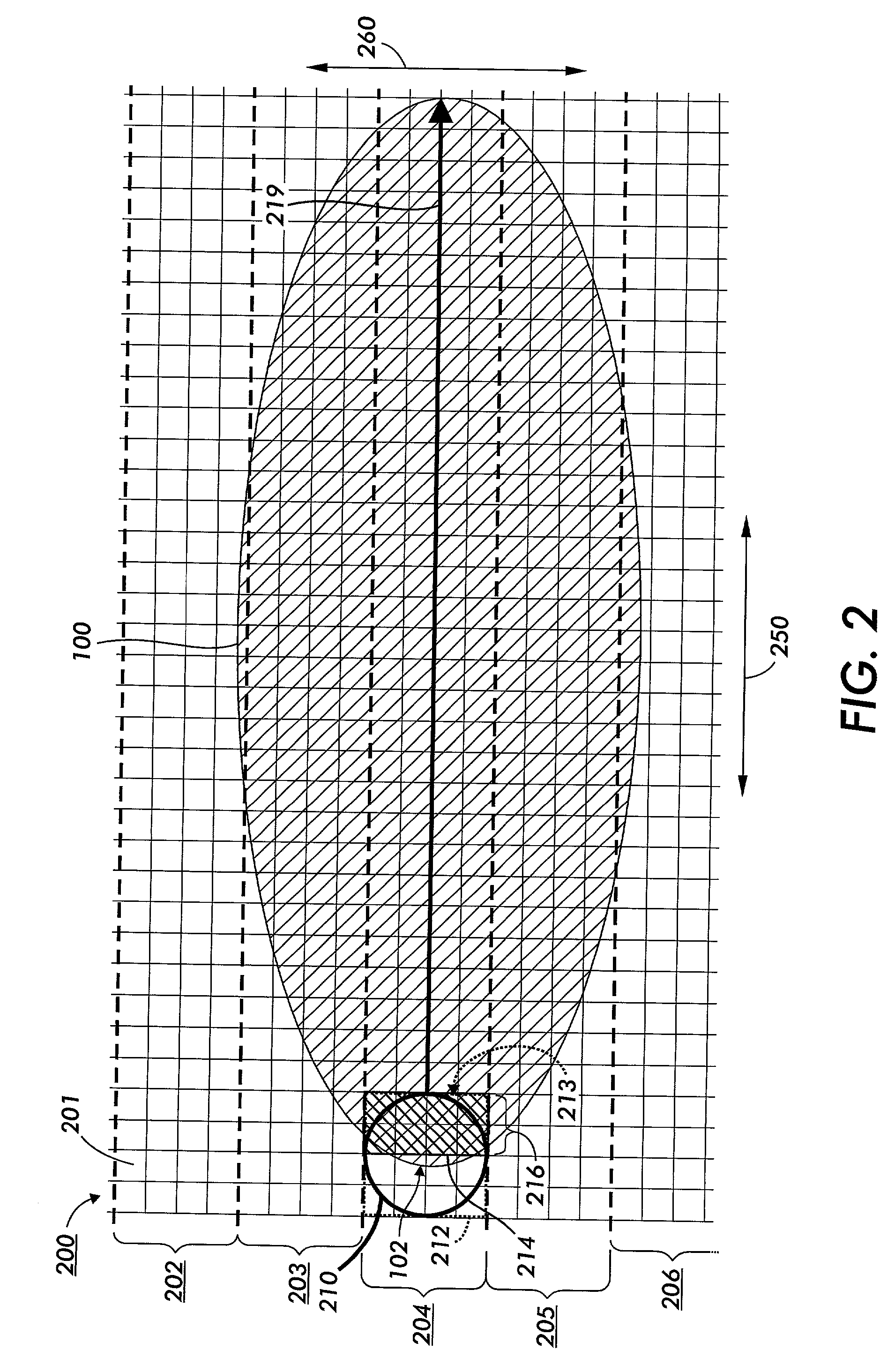Systems and methods for generating binary clustered, irrational halftone dots
a technology of clustering and halftone dots, applied in the field of system and method for generating binary irrational halftone dots, can solve the problems of the inability to avoid such moir patterns or noise in the resulting image when electronic registration, and the inability to accurately capture the correct image density. the effect of enhancing the utility of electronic registration
- Summary
- Abstract
- Description
- Claims
- Application Information
AI Technical Summary
Benefits of technology
Problems solved by technology
Method used
Image
Examples
Embodiment Construction
[0047] This invention is directed to systems and methods used to modify how a spatially-distributed stimulus is modified to cluster image elements produced according to a shape function so that the shape of the image element resulting from the modified spatial modulation has edges that are clustered together.
[0048] The following detailed description of the exemplary embodiments of this invention will be presented in view of a raster output scanner (ROS) image forming apparatus. However, it should be appreciated that the systems and methods of this invention, as described herein, can be applied to an image forming apparatus that uses any type of stimulus, including any type of projected radiation of any wavelength, a spatially-modulated magnetic field and / or magnetic flux, a spatially-modulated applied electric potential, spatially-modulated applied heat energy, a spatially modulated direct application of toner, ink or other material used to create an image, or any other known or lat...
PUM
 Login to View More
Login to View More Abstract
Description
Claims
Application Information
 Login to View More
Login to View More - R&D
- Intellectual Property
- Life Sciences
- Materials
- Tech Scout
- Unparalleled Data Quality
- Higher Quality Content
- 60% Fewer Hallucinations
Browse by: Latest US Patents, China's latest patents, Technical Efficacy Thesaurus, Application Domain, Technology Topic, Popular Technical Reports.
© 2025 PatSnap. All rights reserved.Legal|Privacy policy|Modern Slavery Act Transparency Statement|Sitemap|About US| Contact US: help@patsnap.com



